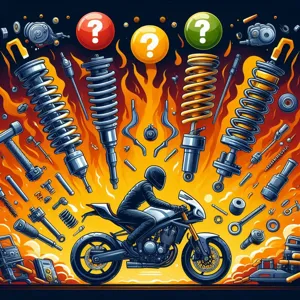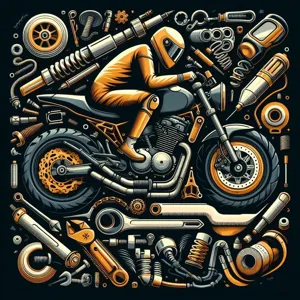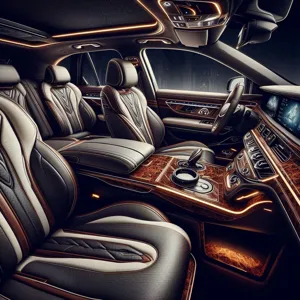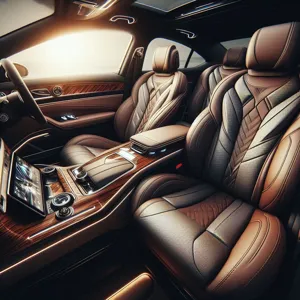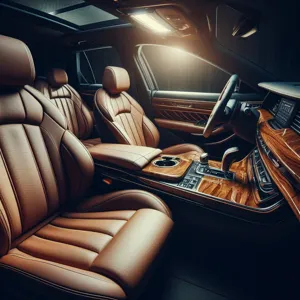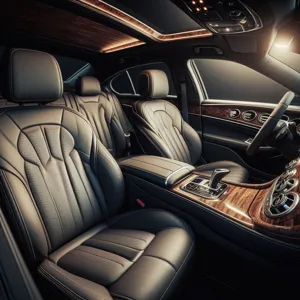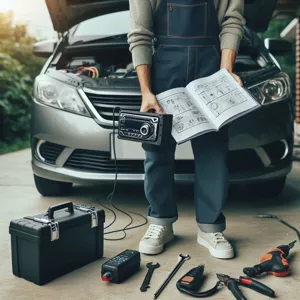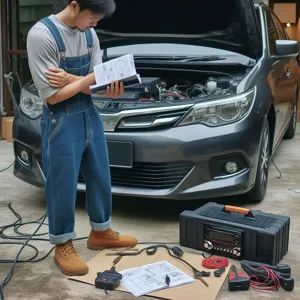As the roar of engines and the freedom of the open road captivate the hearts of enthusiasts worldwide, the world of motorbikes is experiencing a thrilling transformation.
With rapid advancements in technology and innovative design philosophies, the future of motorbike riding is set to redefine the experience for both seasoned riders and newcomers alike. From electric powertrains that promise cleaner, greener journeys to smart connectivity features that enhance safety and navigation, the landscape of motorcycling is evolving at an unprecedented pace. This blog post delves into the most exciting trends shaping the future of motorbike technology and design, exploring how these innovations are not just changing the way we ride but also enhancing the thrill of the adventure. Buckle up as we ride into tomorrow, unveiling the groundbreaking developments that are set to revolutionize the motorcycling experience.
1. Introduction to the Evolution of Motorbike Technology
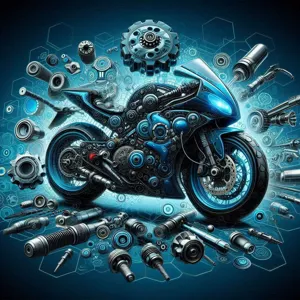
The world of motorbikes has always been a fascinating blend of engineering marvel and artistic expression, continuously evolving to meet the demands of riders and the challenges of the open road. As we stand on the brink of a new era in motorbike technology, it’s crucial to reflect on the journey that has brought us here. From the clunky, steam-powered bicycles of the 19th century to the sleek, high-performance machines of today, the evolution of motorbike technology is a testament to human ingenuity and our relentless pursuit of innovation.
In the early days, motorbikes were rudimentary at best, often relying on outdated technology to achieve modest speeds. However, as the 20th century unfolded, advancements in engine design, materials, and aerodynamics began to transform these machines into powerful vehicles capable of thrilling performance and unparalleled efficiency. The introduction of electric models in the late 20th century marked a pivotal shift, pushing the boundaries of sustainability while promising an exhilarating riding experience that was once reserved for traditional combustion engines.
Today, we find ourselves on the cusp of a remarkable technological revolution. With the rise of smart technology, connectivity, and automation, the motorbike industry is set to witness unprecedented changes. Features like adaptive cruise control, collision detection, and integrated navigation systems are becoming standard, enhancing rider safety and convenience. Meanwhile, the design landscape is evolving alongside technology, with manufacturers embracing bold aesthetics and lightweight materials to create not only high-performing bikes but also visual masterpieces that reflect individual style.
As we delve deeper into the future trends in motorbike technology and design, we’ll explore how these innovations are reshaping the riding experience, ensuring that motorbikes remain not just a mode of transportation, but a lifestyle choice for enthusiasts around the globe. Join us on this thrilling ride into tomorrow, where the only limit is the imagination of those who dare to dream.
2. The Rise of Electric Motorbikes
As we navigate the ever-evolving landscape of transportation, one of the most significant trends reshaping the motorbike industry is the rise of electric motorbikes. This shift towards electrification is not just a fleeting fad; it represents a profound change in how we think about mobility, sustainability, and the riding experience itself.
Electric motorbikes are becoming increasingly popular, driven by a confluence of factors including environmental awareness, advancements in battery technology, and the desire for cost-effective transportation. Unlike their gas-guzzling counterparts, electric bikes offer a quieter, more efficient ride with zero tailpipe emissions, appealing to eco-conscious consumers who want to minimize their carbon footprint. In urban environments where noise pollution is a growing concern, electric motorbikes present a solution that allows riders to enjoy the thrill of the open road without disturbing the peace of city life.
Battery technology has also seen remarkable advancements, leading to longer ranges and faster charging times. Modern electric motorbikes can now compete with traditional bikes in terms of performance and usability. Some models can travel over 200 miles on a single charge, making them a viable option for both daily commutes and weekend adventures. Furthermore, the growing availability of charging infrastructure means that riders can easily find a power source, ensuring that range anxiety becomes a thing of the past.
In addition to performance and sustainability, the design of electric motorbikes is undergoing a transformation. Manufacturers are embracing innovative aesthetics and integrating smart technology features that enhance the riding experience. From sleek, aerodynamic frames to customizable digital displays, electric motorbikes are not only functional but also stylish, appealing to a new generation of riders who value both form and function.
As we look to the future, the rise of electric motorbikes signifies a broader cultural shift towards greener transportation solutions. With major motorcycle manufacturers investing heavily in electric models, we can expect to see an influx of new designs and technologies that push the boundaries of what is possible on two wheels. For riders, this means more choices, improved performance, and a more sustainable way to enjoy the freedom of the ride. The electric revolution is here, and it promises to reshape the landscape of motorbiking for years to come.
3. Advancements in Battery Technology

As the world shifts towards sustainable energy solutions, advancements in battery technology are poised to revolutionize the motorbike industry. Traditionally, motorbikes have been synonymous with roaring engines and fossil fuels, but the future is electric, and battery innovation is at the forefront of this transformation.
Modern electric motorbikes are now equipped with high-capacity lithium-ion batteries that offer improved energy density, allowing riders to travel longer distances on a single charge. Recent breakthroughs in solid-state battery technology promise even greater advancements, boasting faster charging times, lighter weights, and enhanced safety features compared to their liquid counterparts. Imagine a world where you can recharge your bike in under 30 minutes and enjoy a range of up to 300 miles—this is quickly becoming a reality.
Moreover, the integration of regenerative braking systems means that every ride can contribute to extending battery life. When riders apply the brakes, the kinetic energy is converted back into electrical energy, which is fed back into the battery. This not only enhances efficiency but also provides an exciting new layer to the riding experience.
Another exciting development is the emergence of smart battery management systems. These systems utilize advanced algorithms and AI technology to monitor battery performance, optimize charging cycles, and provide real-time data directly to the rider. This means not only improved battery longevity but also enhanced safety through predictive maintenance alerts.
For those who love the thrill of customization, advancements in battery technology are paving the way for a new era of bespoke electric bikes. As batteries become smaller and more efficient, manufacturers are offering riders the option to design their own unique setups, tailoring everything from battery placement to power outputs.
As we look to the horizon, it’s clear that the future of motorbikes is not just about speed and style; it’s about sustainability and innovation. With advancements in battery technology leading the charge, riders can expect a thrilling, environmentally-friendly journey ahead.
4. Smart Motorbikes: Integrating IoT Features
As we venture further into the realm of advanced technology, the evolution of smart motorbikes stands out as one of the most exciting trends shaping the future of the two-wheeled world. Integrating Internet of Things (IoT) features, these motorcycles are not just modes of transportation; they are becoming sophisticated machines that can communicate, learn, and adapt to the needs of their riders.
Imagine a world where your motorbike alerts you to potential mechanical issues before they become serious problems, or where your bike’s navigation system seamlessly integrates with your smartphone to provide real-time traffic updates and optimal routes. With IoT technology, this is no longer the stuff of science fiction. Sensors embedded within the bike can monitor various parameters, such as tire pressure, engine performance, and fuel levels, sending this data directly to your device. This not only enhances safety but also promotes proactive maintenance, ultimately extending the life of your bike.
Additionally, smart motorbikes are increasingly adopting features like adaptive cruise control and collision avoidance systems, taking rider safety to a whole new level. By utilizing a network of sensors and cameras, these bikes can detect obstacles and adjust speed automatically, reducing the risk of accidents. The integration of artificial intelligence allows for personalized riding experiences, where the bike learns your preferences over time, adjusting performance settings for optimal comfort and efficiency.
Moreover, the connectivity offered by IoT technology opens up avenues for enhanced communication between riders. Imagine being able to share your ride data with fellow bikers or participate in group rides where all devices are synchronized, ensuring everyone stays on the same route. With features like voice-activated controls and app integrations, staying connected has never been easier, allowing riders to focus on the thrill of the journey instead of the distractions.
As we look towards the horizon, the integration of IoT features in smart motorbikes promises not only to transform the riding experience but also to redefine the way we interact with our vehicles. With advancements in technology driving innovation, the future of motorbikes is not just about speed and style; it’s about creating intelligent machines that enhance safety, convenience, and enjoyment for riders everywhere.
5. The Role of AI in Enhancing Riding Experience
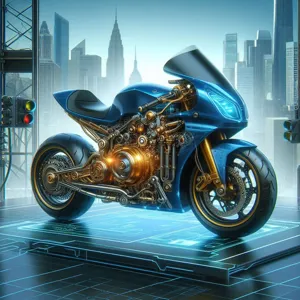
As we ride into the future, the integration of artificial intelligence (AI) is poised to revolutionize the motorbike industry, enhancing the riding experience like never before. Imagine a world where your motorcycle learns your preferences, understands your riding style, and adapts accordingly to ensure optimal performance and safety. AI is already making strides in this direction, paving the way for smarter, more intuitive bikes that cater to individual riders.
One of the most exciting applications of AI is in the realm of safety features. Advanced driver-assistance systems (ADAS) are beginning to make their way into motorbikes, utilizing AI to analyze real-time data from various sensors. These systems can detect obstacles, monitor road conditions, and even predict potential hazards, alerting riders before a situation escalates. Imagine cruising down a winding road, knowing that your bike is constantly scanning for dangers, effortlessly enhancing your confidence and control.
Furthermore, AI can personalize the riding experience through adaptive technology. By learning your habits and preferences, a smart motorcycle can adjust settings such as suspension stiffness, throttle response, and even seating position to create a customized ride tailored just for you. The result is a seamless blend of man and machine, where the bike feels like an extension of the rider, responding intuitively to every twist of the throttle and lean into a turn.
In addition to enhancing performance and safety, AI is also reshaping the way motorcyclists interact with their bikes. Voice-activated systems and smart displays are making it easier to access navigation, music, and communication features without taking your hands off the handlebars. Imagine effortlessly asking your bike for directions or changing playlists with just a voice command, allowing you to stay focused on the road ahead.
As we continue to explore the role of AI in motorbike technology, it is clear that its potential is vast and transformative. With innovations that prioritize safety, customization, and connectivity, the future of riding promises to be more exhilarating and secure than ever before. Embracing these advancements will not only enhance individual riding experiences but also foster a deeper connection between riders and their machines, heralding a new era in motorcycling.
6. Lightweight Materials and Their Impact on Design
As motorbike technology continues to evolve, one of the most significant trends shaping the future of design is the use of lightweight materials. Gone are the days when heavy steel frames were the norm; today’s manufacturers are turning to advanced composites, aluminum alloys, and even carbon fiber to create bikes that deliver impressive performance without the burden of excess weight.
These lightweight materials not only enhance the bike’s speed and agility but also contribute to improved fuel efficiency and reduced emissions—an essential consideration in today’s environmentally conscious market. For instance, using carbon fiber in the construction of a motorcycle frame can reduce weight by up to 50% compared to traditional steel, allowing for quicker acceleration and sharper handling. This can transform the riding experience, making it more responsive and exhilarating.
Moreover, the design possibilities with lightweight materials are nearly limitless. Manufacturers can experiment with more intricate shapes and curves, leading to aesthetically striking designs that were previously unattainable. The sleek lines of modern bikes, complemented by meticulous craftsmanship, not only appeal to the eye but also enhance aerodynamics, resulting in better stability and control on the road.
In addition to performance and aesthetics, the shift to lightweight materials often translates to greater safety for riders. A lighter bike can mean less impact during a collision, while also allowing for innovative safety features to be seamlessly integrated into the design. With the rise of smart technology, imagine a bike that can communicate with its rider, adjusting suspension and braking systems in real-time based on the weight distribution and riding conditions—an advancement made possible by the use of lighter, more flexible materials.
As we ride into tomorrow, the emphasis on lightweight materials signifies a pivotal shift in motorbike technology and design. It promises not only to enhance the thrill of riding but also to pave the way for a more sustainable and innovative future in the motorcycle industry. Whether you’re a seasoned rider or a newcomer to the world of motorcycles, the evolution of lightweight materials is sure to make your next ride an exhilarating experience.
7. Safety Innovations: ABS, Traction Control, and Beyond
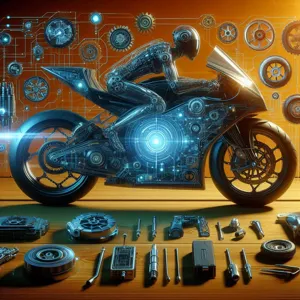
As the world of motorcycling evolves, safety innovations are at the forefront of design and technology, ensuring that riders can enjoy their passion with greater peace of mind. Anti-lock Braking Systems (ABS) have revolutionized how motorcyclists brake, preventing wheel lock-up during sudden stops and allowing for more controlled deceleration. With ABS now becoming a standard feature on many new models, it significantly reduces the likelihood of accidents, especially in challenging road conditions.
Beyond ABS, traction control systems (TCS) have emerged as a game changer for rider safety. This technology monitors the wheel speed and automatically adjusts engine output to prevent rear-wheel spin, providing a safer riding experience on slippery or uneven surfaces. For enthusiasts who crave performance, advanced TCS allows for aggressive riding while maintaining optimal grip, blurring the line between safety and thrill.
Looking to the future, we see even more innovative safety features on the horizon. Adaptive cruise control, which automatically adjusts the bike’s speed in relation to the vehicle in front, is being developed to enhance long-distance touring and urban commuting. Furthermore, the integration of collision warning systems using radar and cameras can alert riders of impending dangers, giving them precious seconds to react.
Another exciting trend is the incorporation of smart helmets equipped with heads-up displays that provide real-time information, navigation assistance, and even communication features. This allows riders to stay connected without taking their focus off the road.
As manufacturers continue to invest in research and development, motorbike safety will only improve, making riding more accessible and enjoyable for everyone. Whether you’re a seasoned rider or a newcomer to the world of motorcycling, these safety innovations are paving the way for a safer, more exhilarating future on two wheels.
8. Customization Trends: Personalizing Your Ride
In a world where individuality reigns supreme, motorbike enthusiasts are increasingly seeking ways to make their rides truly their own. Customization trends are not just about aesthetics; they reflect a deeper desire for personal expression and enhanced riding experiences. Whether it’s a sleek café racer, an adventurous touring bike, or a rugged cruiser, riders are embracing the opportunity to tailor their machines to reflect their unique personalities and riding styles.
From bespoke paint jobs and custom upholstery to aftermarket parts and high-tech gadgets, the options for personalizing a bike are virtually limitless. One popular trend is the integration of smart technology, allowing riders to modify their bikes with features like GPS navigation, advanced audio systems, and even performance monitoring apps. These tech-savvy enhancements not only improve the riding experience but also provide riders with a sense of control and connection to their machines.
Another growing trend is the use of sustainable materials in customization. As environmental consciousness rises, more riders are opting for eco-friendly options, such as recycled components and vegan leather seats. This shift not only aligns with personal values but also sets a precedent for the industry, encouraging manufacturers to consider sustainability in their designs.
Social media platforms, especially Instagram and Pinterest, have become invaluable resources for inspiration and community engagement. Riders can showcase their customized bikes, share tips, and discover the latest trends from around the globe. This sense of community fosters creativity and drives innovation, as enthusiasts collaborate and push the boundaries of what’s possible.
As we look to the future, the customization trend in motorbike culture is set to evolve even further. With advancements in 3D printing and on-demand manufacturing, riders will soon have access to even more personalized options, allowing them to create parts that fit their exact specifications. This democratization of customization not only enhances the riding experience but also encourages a deeper connection between riders and their machines. In a rapidly changing world, the ability to personalize a ride ensures that motorcycling remains a vibrant expression of individuality and passion.
9. Sustainable Practices in Motorbike Manufacturing
As the world increasingly shifts its focus towards sustainability, the motorbike industry is not lagging behind. Manufacturers are embracing eco-friendly practices that not only reduce environmental impact but also appeal to a growing demographic of eco-conscious riders. From the materials used in production to the energy sources powering these machines, sustainability is becoming a central theme in motorbike technology and design.
One significant trend is the use of recycled and biodegradable materials in the construction of motorbikes. Companies are exploring innovative ways to incorporate materials like recycled aluminum, bioplastics, and even natural fibers into their designs. This not only minimizes waste but also reduces the carbon footprint associated with sourcing new materials.
Moreover, electric bikes (e-bikes) are making waves as a green alternative to traditional fuel-powered models. With advancements in battery technology, e-bikes are becoming more powerful, with longer ranges and faster charging times, making them a practical choice for everyday commuters. The integration of regenerative braking systems also allows these bikes to capture energy during rides, further enhancing their efficiency.
Manufacturers are also focusing on sustainable production processes. Many are investing in energy-efficient factories that utilize renewable energy sources such as solar or wind power. This shift not only decreases emissions during production but also promotes a culture of sustainability within the industry.
In addition to the manufacturing side, sustainable practices extend to after-sales care. Some brands are pioneering take-back schemes that encourage customers to return their old bikes for recycling, ensuring that materials are reused and waste is minimized.
As the motorbike industry continues to evolve, these sustainable practices reflect a broader commitment to environmental stewardship. Riders today are not just looking for high-performance machines; they are increasingly prioritizing brands that align with their values. By embracing sustainability, the motorbike industry is not only riding into a more responsible future but also setting the stage for innovation that resonates with the next generation of riders.
10. The Future of Autonomous Motorbikes
As we look to the horizon of motorbike technology, one of the most exciting developments on the path ahead is the rise of autonomous motorbikes. Imagine a future where riders can enjoy the thrill of the open road without the burden of constant navigation or traffic management. Autonomous motorbikes promise to revolutionize the riding experience by integrating advanced technologies such as artificial intelligence, machine learning, and sophisticated sensor systems.
These cutting-edge machines will be equipped with an array of sensors that monitor their surroundings, allowing them to detect obstacles, assess road conditions, and even communicate with other vehicles. Picture cruising down a highway while your motorbike autonomously adjusts its speed to match traffic flow, navigates complex intersections, and even finds the best routes to your destination—all while you sit back and enjoy the ride.
Moreover, the safety implications of autonomous motorbikes are profound. By significantly reducing the chances of human error—often the leading cause of motorbike accidents—these vehicles could lead to a dramatic decrease in road injuries and fatalities. Enhanced safety features, such as automatic braking and collision avoidance systems, will provide riders with a new level of protection, making motorbiking more accessible to a wider audience.
However, the transition to autonomous riding will not be without its challenges. Issues surrounding regulatory frameworks, public perception, and the need for robust cybersecurity measures will require careful consideration. Manufacturers will need to address concerns about trust and reliability, ensuring that riders feel safe relinquishing control to their machines.
As we embrace this new frontier, the future of autonomous motorbikes holds the promise of not just transforming how we ride, but also reshaping our relationship with the open road. With a blend of innovation, safety, and the thrill of freedom, the autonomous motorbike could soon become a staple on the highways of tomorrow, ushering in an era of unprecedented convenience and adventure for riders everywhere.
11. Enhanced Connectivity: Motorbikes and Mobile Apps
In an era where connectivity drives innovation, the integration of mobile apps with motorbike technology is set to transform the riding experience as we know it. Enhanced connectivity is not just a trend; it’s a revolution that’s reshaping how riders interact with their machines and the world around them.
Imagine revving your engine, and with a simple swipe on your smartphone, you can access a wealth of information about your bike’s performance, maintenance needs, and even real-time weather updates. Mobile apps are becoming essential companions for riders, offering features like GPS navigation tailored specifically for bikes, route planning that incorporates scenic byways, and alerts for potential hazards along the way.
But the benefits extend far beyond navigation. Many of the latest motorbikes come equipped with advanced onboard systems that sync seamlessly with dedicated mobile applications. Riders can track metrics such as fuel consumption, tire pressure, and engine health directly from their devices. This level of insight empowers riders to make informed decisions about maintenance, ensuring that their bikes stay in peak condition.
Moreover, the social aspect of riding is also enhanced through these apps. Riders can connect with fellow enthusiasts, join groups, and share their adventures in real-time. Imagine receiving notifications about upcoming group rides, local events, or even spontaneous meetups with like-minded individuals—all organized through a user-friendly interface on your mobile device.
Additionally, safety is paramount, and enhanced connectivity plays a crucial role in this aspect as well. Many apps now offer features such as crash detection and emergency alerts, providing peace of mind for both riders and their loved ones. If an accident occurs, the app can automatically send your location and vital information to emergency services, significantly decreasing response times.
As motorbike technology continues to evolve, the synergy between bikes and mobile applications will undoubtedly deepen, making riding more efficient, connected, and enjoyable than ever before. So, whether you’re a seasoned rider or a newcomer to the biking world, embracing this enhanced connectivity will not only enrich your riding experience but also ensure you’re at the forefront of a thrilling new frontier in motorbike culture.
12. Exploring New Design Aesthetics
As the world of motorbikes evolves, so too does the aesthetic vision that defines their design. The future is not just about performance; it’s equally about how these machines look and feel. Emerging design aesthetics are breaking free from traditional norms, embracing bold, innovative styles that resonate with the desires of today’s riders.
Minimalism is taking center stage, with sleek lines and subtle curves that emphasize simplicity and elegance. Manufacturers are opting for a less-is-more approach, stripping away unnecessary embellishments to create visually striking bikes that speak to a refined sense of taste. This trend reflects a broader societal shift towards sustainability and functionality, where less clutter translates to a more harmonious riding experience.
In contrast, a resurgence of retro-futurism is captivating the imagination of designers and riders alike. Inspired by the classic bikes of the past, this aesthetic blends vintage charm with modern technology, creating a nostalgic yet forward-thinking look. Picture chrome finishes paired with advanced digital displays and electric powertrains, offering a harmonious blend of old and new. This fusion not only appeals to seasoned enthusiasts but also attracts a new generation eager to embrace the romance of motorcycling while benefiting from cutting-edge advancements.
Color palettes are also seeing a revolution. Bold, vibrant hues are emerging as the norm, challenging the traditional blacks and silvers that have dominated the market for years. Customization options are becoming more prevalent, allowing riders to express their individuality through unique color schemes and graphic designs. As personalization continues to gain importance, we can expect to see a wider array of finishes, from matte to gloss, and even textured surfaces that enhance the tactile experience of owning a motorbike.
Moreover, sustainability is becoming an integral part of the design conversation. Eco-conscious materials, such as recycled plastics and plant-based composites, are being embraced to reduce the environmental impact of motorbike production. Designers are finding innovative ways to incorporate these materials without compromising aesthetics, ensuring that the future of motorbike design not only looks good but feels responsible.
In this dynamic landscape, the fusion of technology and artistry is paving the way for a new era in motorbike design. As we ride into tomorrow, expect to see motorcycles that are not only high-performing machines but also stunning works of art that reflect the personality and values of their riders. The road ahead is not just about speed; it’s about style, sustainability, and a profound connection between man and machine.
13. Future Trends in Motorbike Accessories
As we navigate the ever-evolving landscape of motorbike technology, the accessories designed to enhance both the riding experience and the functionality of motorcycles are also advancing at a breathtaking pace. Future trends in motorbike accessories promise to cater to the needs of modern riders, delivering not only aesthetic appeal but also unparalleled safety and performance enhancements.
One of the most exciting developments in this arena is the integration of smart technology into accessories. Imagine helmets equipped with heads-up displays that provide navigation prompts, speed readings, and even call notifications, all without necessitating a glance away from the road. Smart gloves that translate hand gestures into signals for turn indicators or hazard lights are also on the horizon, creating a seamless communication experience between rider and machine.
In addition to smart technology, sustainability is set to reshape the way accessories are designed and produced. From eco-friendly materials for riding gear to solar-powered heated vests and jackets that keep riders warm without draining their motorcycle’s battery, the emphasis will increasingly be on minimizing environmental impact while maximizing rider comfort.
Safety is another critical focus for future accessories. We anticipate advanced braking systems that utilize sensors to detect potential hazards and automatically engage, along with airbag vests that deploy on impact to protect crucial areas of the body. Additionally, visibility-enhancing accessories, such as LED light strips that can be attached to various parts of the bike, will help make riders more visible to other road users, especially during nighttime rides.
Moreover, customizability will be taken to new heights. Riders will have the ability to personalize their accessories using modular components that can be easily swapped out or upgraded. This trend will allow for a unique blend of style and functionality, ensuring that every bike reflects its owner’s personality while maintaining the highest standards of performance.
In summary, the future of motorbike accessories is not just about adding convenience; it’s about creating a holistic riding experience that prioritizes safety, sustainability, and personalization. As these trends evolve, they will undoubtedly revolutionize the way we perceive and interact with our motorcycles, making the ride not just a journey but a true expression of who we are as riders.
14. The Impact of Urbanization on Motorbike Design
As cities around the globe continue to grow and evolve, the impact of urbanization on motorbike design cannot be overstated. Urban environments are becoming increasingly congested, and with that congestion comes the necessity for vehicles that can navigate tight spaces, offer convenience, and align with the eco-conscious values of modern consumers.
Designers and engineers are responding to these challenges with innovative solutions aimed at enhancing the rider’s experience in busy cityscapes. For instance, compact and lightweight models are emerging as favorites among urban riders who require agility and ease of parking. These bikes are often characterized by streamlined silhouettes and foldable components, allowing riders to maneuver effortlessly through traffic and tuck their vehicles away in cramped spaces.
Additionally, the integration of smart technology is revolutionizing the way motorbikes are designed for urban use. Features such as advanced navigation systems, connectivity with smartphones, and built-in safety alerts are becoming standard, ensuring that riders remain informed and connected. This tech-savvy approach not only enhances the riding experience but also aligns with the urban rider’s demand for efficiency and convenience.
Moreover, as cities strive for sustainability, eco-friendly designs are taking center stage. Manufacturers are increasingly incorporating electric and hybrid models into their lineups, reducing emissions and promoting cleaner alternatives for urban transportation. The shift towards electric motorbikes is not just a trend; it’s a response to the pressing need for greener commuting options in densely populated areas.
In conclusion, the interplay between urbanization and motorbike design is shaping a future where agility, technology, and sustainability converge. As cities expand and evolve, so too will the motorbikes that traverse their streets, paving the way for a new generation of riders who prioritize both practicality and environmental responsibility. The future of motorbike technology is not just about speed and power; it’s about creating solutions that fit seamlessly into the urban landscape.
15. Conclusion: Embracing Change in the Riding World
As we navigate the exhilarating landscape of motorbike technology and design, it becomes abundantly clear that the ride into tomorrow is paved with innovation, sustainability, and a profound transformation in rider experiences. The future is not just about faster engines or sleeker designs; it’s about creating an interconnected ecosystem where riders, machines, and the environment harmoniously coexist.
Embracing change in the riding world means welcoming advancements such as electric powertrains that promise to reduce our carbon footprint while delivering an exhilarating performance. It means adopting smart technology that enhances safety, elevates connectivity, and offers tailored riding experiences through real-time data and analytics. Motorbikes are evolving into sophisticated machines equipped with AI and IoT capabilities, allowing for unprecedented levels of customization and user engagement.
Moreover, the design language of motorbikes is shifting towards a minimalist aesthetic, focusing on functionality and ergonomics without sacrificing style. Riders are increasingly drawn to personalized options that reflect their identity and values, fueling a rise in bespoke designs and unique modifications.
As we look ahead, it’s essential for enthusiasts, manufacturers, and the riding community to embrace this wave of change. By fostering a culture of innovation and sustainability, we can ensure that the future of motorcycling not only captivates the hearts of riders but also respects and protects our planet. The road ahead may be uncertain, but one thing is clear: the thrill of the ride is evolving, and with it, the promise of an exhilarating journey into the future. Let us rev our engines and ride into a new era, where every twist and turn leads us to groundbreaking possibilities.
As we steer into the future of motorbike technology and design, it’s clear that innovation is set to transform the riding experience in remarkable ways. From advancements in electric powertrains to the integration of smart technology and sustainable materials, the next generation of motorcycles promises to be more efficient, safer, and incredibly connected. Embracing these trends not only enhances performance and riding pleasure but also aligns with the growing demand for eco-conscious solutions in the automotive world. As enthusiasts and riders, we have an exciting journey ahead filled with possibilities. So, whether you’re a seasoned biker or new to the scene, keep your eyes on the horizon—tomorrow’s ride is sure to be an exhilarating adventure! Thank you for joining us on this exploration of the future; we can’t wait to see where the road takes us next!





